To promote international communication in various fields of artificial intelligence (AI), Shenzhen Association for Artificial Intelligence (SAAI), with organizer Tokyo University of Agriculture and Technology and co-organizer Japan Science and Technology Agency, held the 2022 China-Japan Artificial Intelligence for Social Innovation Conference on March 22nd, 2022. The symposium was held simultaneously at the International Talents Communication Center (Shenzhen, China) and the Sola City ConferenceCenter (Tokyo, Japan). Scholars and experts from both countries were invited to share their latest research and remarks on the innovation in AI. The event was held synchronously online and offline.
The purpose of this conference is to strengthen the academic and technical exchanges of AI between China and Japan, and to explore the approach of international collaboration. In terms of strategic positioning, SAAI is a public science and technology service platform for industries, universities, researchers, governments, and investors. The vision of SAAI is to promote the seriously sustainable development of the AI industry. We concentrate our resources in two areas. First, we assist the national laboratories and universities in converting their patterns and research outputs for market applications and production. Second, we help companies to use their limited resources to find the appropriate R&D capabilities in national laboratories and universities to solve theirreal-world’s technical problems.
Dr. Guanglin Li (Chairman of SAAI; Professor of Shenzhen Institute of Advanced Technology at the Chinese Academy of Sciences) and Dr. Minoru Etoh (Professor of Osaka University; Research Supervisor of CREST) first delivered a speech at the opening ceremony. They briefly introduced the symposium and the day’s schedule, and they warmly welcomed the guests from both countries. They also pointed out that AI has penetrated many aspects of our daily lives in last decades and call for interdisciplinary academic exchange and cooperation, especially in the field of AI. Dr. Minoru Etoh was also the host of the day’s symposium.


Dr. Shin’ichi Satoh (Professor at the Digital Content and Media Sciences Research Division, National Institute of Informatics) was the first to give a talk. The topic was “UNDERPIN: Understanding Psychiatric Illness through Natural Language Processing and Media aNalysis.” He explained that psychiatric disorders are normally diagnosed through patients’ behavior, making it crucial to extract the characteristics of these diseases and understand them thoroughly through patients’ behavior. Utilizing a Natural Language Processing (NLP) along with a multimedia analysis-based approach to digitize or quantify disease characteristics, we will expand our understanding of psychiatric disorders, eventually leading to better prevention and/or early diagnosis.

Dr. Jingyong Su (Member of SAAI; Professor of Harbin Institute of Technology, Shenzhen) followed with his presentation, “Functional Clustering of Whole Brain White Matter Fibers.” He discussed how functional clustering of fibers using white matter BOLD signals provides a novel perspective for exploring the evolution of functional architecture in axonal fibers and the relationship between structure and function in the human brain. His team developed a comprehensive Riemannian framework to integrate the physical characteristics of the fiber with the white matter BOLD signal along the fiber for whole brain fiber clustering. The evaluation results demonstrate that their framework achieves functionally meaningful and consistent clustering results.

Next, Dr. Shipeng Li (Vice Chairman of SAAI; IEEE Fellow; Managing Director of SAIL Labs; Adjunct Professor at the Chinese University of Hong Kong) gave his presentation: Linking Cognitive Science and Cognitive Intelligence: New Path to AI Development? He explained that we have hit certain bottlenecks in AI development. With available large-scale models and large-scale real data collected on the human cognitive process, we may be able to more precisely emulate that cognitive process. “Start like a baby, learn like a kid” maybe a viable path to AI development. Large scalepre-trained models are probably the start of a new era.

Following this presentation, Dr. Yuexian Zou (Vice Chairman and General Secretary of SAAI; Professor of Peking University) posed questions on topics such as the data-driven paradigm for AI reasoning, and there was a heated discussion among them, which gave us a deeper understanding of the latest high technologies, as well as new perspectiveson the future of AI.



It is worth mentioning that Dr. Shipeng Li is very influential in multiple domains, including multimedia, IoT and AI. Heholds more than 200 US patents and has published over 300 academic papers, many of which are highly cited. He was named as one of the top 1,000 computer scientists in the world by Guide2Research. He has trained four MIT TR35 Innovator Award Winners.
After a lunch break, Dr. Michiaki Hamada (Professor at the Faculty of Science and Engineering, Waseda University) gave a presentation on his “AI Aptamer Drug Discovery Project.” He believes that we can establish “AI aptamer drug discovery” by integrating aptamer drug discovery experiments with RNA informatics and AI in order to dramatically reduce the drug discovery period for RNA aptamers, which are attracting attention as next-generation new drugs that can replace low-molecular-weight compounds.

After that, Dr. Ken’ichi Morooka (Professor at the Graduate School of Natural Science and Technology, Okayama University) spoke on“Computer-Aided Cancer Screening System by 3D AI for Identifying Cells.” He took us through his project, whose goal was to develop an automatic AI-based system of cancer screening using 3D information about cells obtained from multi-focus digital images with gigapixels. In addition, the system contributes to the drastic improvement of the accuracy and efficiency of the cancer screening compared to existing commercial screening systems using 2D cell images.
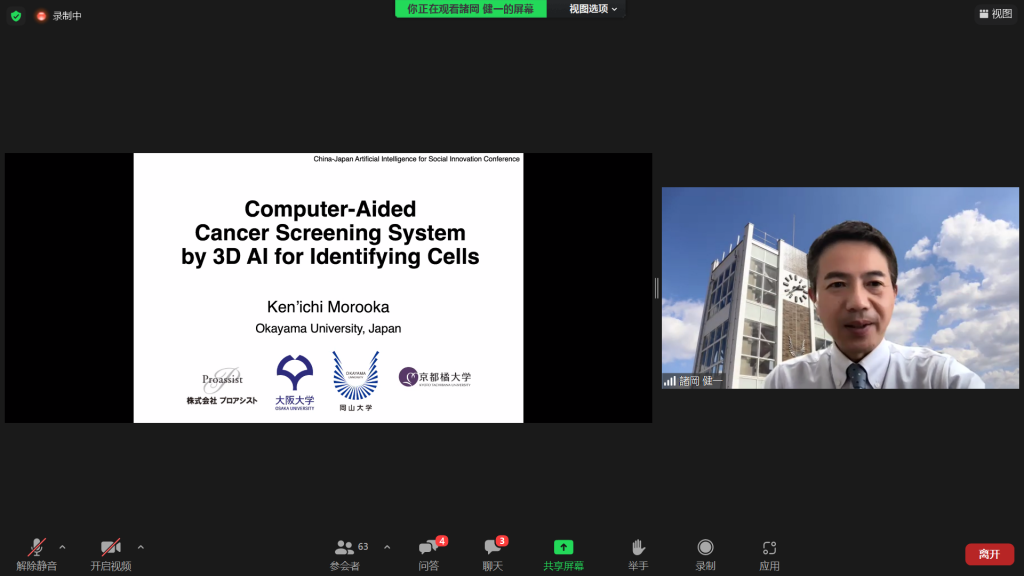
After a short break, Dr. Fei Chen (Associate of SAAI; Professor of Southern University of Science and Technology) educated attendees on “AI-Driven Brain-Computer Interfaces for Improving Human Speech Communication.” There has been a significant increase in the number of people suffering from communication disorders that adversely affect an individual’s physical and psychological health. The rapid development of AI and brain-computer interface (BCI) technologies provides advanced and effective methods for the diagnosis, treatment and rehabilitation of communication disorders. In this talk, he introduced the BCI studies currently being investigated by his research team, including Electroenc Ephalo Graphy (EEG)-based auditory attention decoding, EEG-based emotion recognition, and speech imagery and synthesis.

Dr. Fei Chen and Academician Yi Pan (Vice Chairman of SAAI; Professor at the Shenzhen Polytechnic University of Chinese Academy of Sciences) then had a lively discussion with both the online and offline attendees about phoneme classification, emotional speech generation and EEG signals processing, which taught brought to light a great deal about these latestadvances in AI-powered BCI for speech communication.

Next, Dr. Yoichi Ochiai (Associate Professor at the Library, Information and Media Science, University of Tsukuba) presented on his project, “Design and Deployment of a xDiversity AI Platform for Audio-Visual-Tactile Communication towards an Inclusive Society.” This project aims to explore AI-assisted human-machine integration techniques for overcoming impairments and disabilities. Byconnecting assistive hardware and sensors and actuators with a user-adaptive and interactive learning framework, he and his research team proposed and developed a proof of concept for a “xDiversity AI platform” to meet the various abilities, needs, and demands of society. Their final goal is a social designand deployment of the assistive technologies towards an inclusive society.
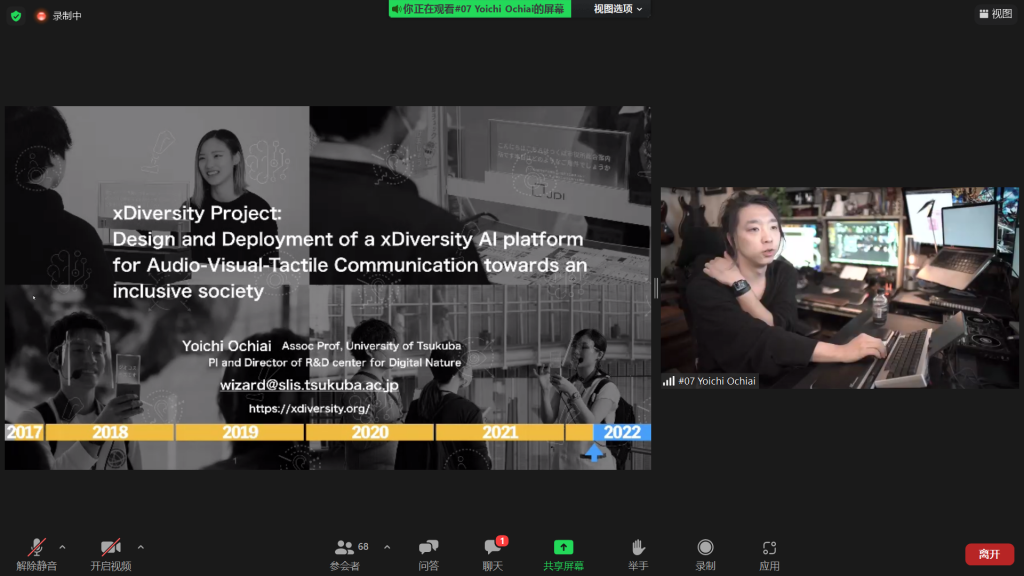
After a short break, Dr. Yuexian Zou gave a presentation on “Low Resource Visual Captioning Approaches for Medical Report Generation.” She provides a clear explanation of automatic Medical Report Generation (MRG), which aims to generate a long paragraph describing both the normal and abnormal regions given certain medical images, which is valuable for assisting radiologists in clinical decision-making. It was her who first introduced the motivation for this work, as well as the research background. She then briefly reviewed the whole pipeline for this task and the key techniques used for information representation and generation. The threelastest advances in MRG from her research group were illustrated in details, including the applications and innovations of contrastive attention, multimodal curriculum learning and distilling posterior and prior knowledge for the MRG task. Extensive experimental results were shown and analyzed, verifying the effectiveness of their methods.




In a Q&A session, Aademician Yi Pan and Dr. Tong Zhang (Vice General Secretary of SAAI; Assistant Professor of Peng Cheng Laboratory; Vice Presidentof Shenzhen Association of Women Scientists), as well as other online and offline audiences discussed the visual and language representation techniques with Dr. Yuexian Zou. In the discussion, Dr. Yuexian Zou proposed that prior knowledge from radiologists may be helpful if it can be properly embedded in the model. Dr. Yuexian Zou also gave a more detailed introduction to the data her team used and her reflections on data-driven paradigms, which highlighted the difficulties of automatic generation of medical reports. Nowadays, the application of AI techniques in health and care are gaining increasing attention. Although there is still a long way to go, there is no doubt that such AI-assisted clinical technologies will facilitate our lives, and expertsin this domain such as Dr. Yuexian Zou are now striving for this goal.

After that, Dr. Tong Zhang gave her presentation “Towards Unbiased and Annotation Free Medical Image Analysis via Self-Supervised and Weakly Supervised Learning.” Deep learning based methods have achieved great successes in the medical image analysis domain, thanks to their efficient and effective nature for supervised tasks. However, such successes rely heavily on the size of the training data and its annotation quality. For fully-supervised image segmentation tasks, the classic manual labeling routines inevitably introduce inter-operator variations and annotation biases. To support unbiased model training and to minimize the labeling costs, she introduced their research works on self-supervised and weakly supervised methods.


After that, Dr. Jie Liu (Associate of SAAI; IEEE Fellow; Professor of Harbin Institute of Technology) gave a presentation on “AI under Real-World Constraints.” He shared his team’s progress in resource optimization in embedded platforms, and a privacy-friendly AI framework based on a generalization of federated learning.
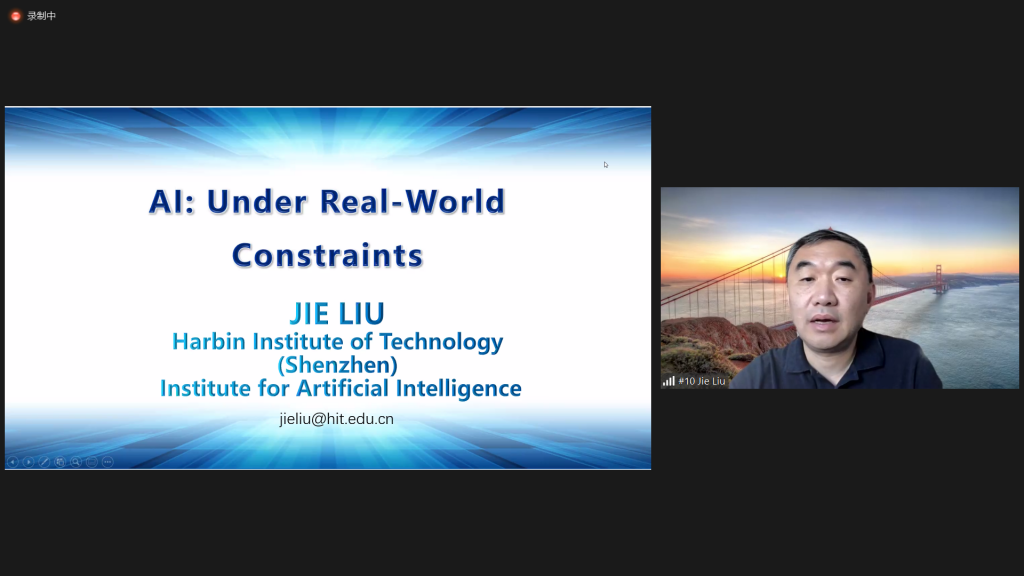
Finally, Dr. Shinpei Kato (Associate Professor at the Graduate School of Information Science and Technology, University of Tokyo) gave a speech about “Certifiable Autonomous Driving.” This research contributes to the production of autonomous driving systems that continuously improve their intelligence with each use. The scope of intelligence includes not only a basic automation capability, such as perception, planning, and control, but also a prediction capability for the risk of driving scenes and anomaly of the running system. His team believes that risk and anomaly prediction is becoming the most significant capability to ensure the safety and comfort of emerging autonomous driving technology.

This conference strengthened the academic and technical exchange between China and Japan in the field of artificial intelligence, showcased the development achievements of the two countries’ new generation of information technology, and deepened the scientific and technological ties between the two countries. We are pleased with the event’s success and looking forward to further high-tech cooperation and academic exchange in the future between China and Japan.
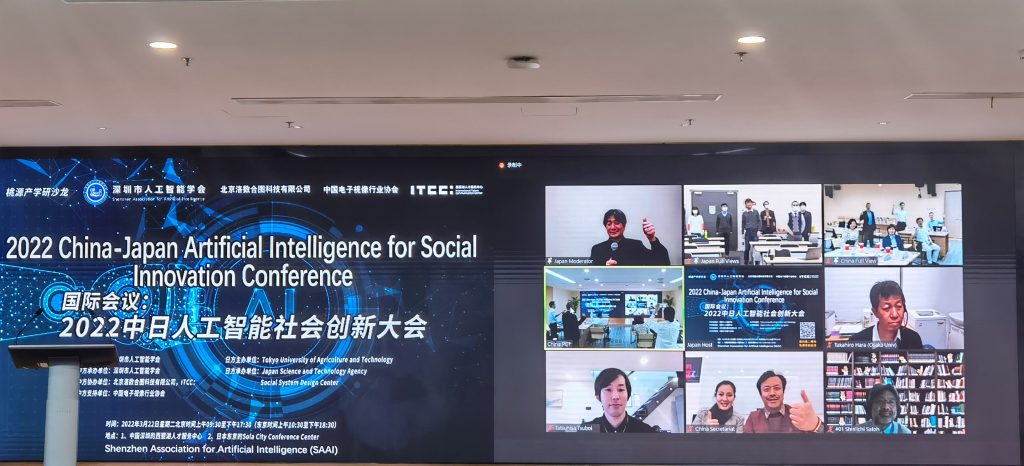
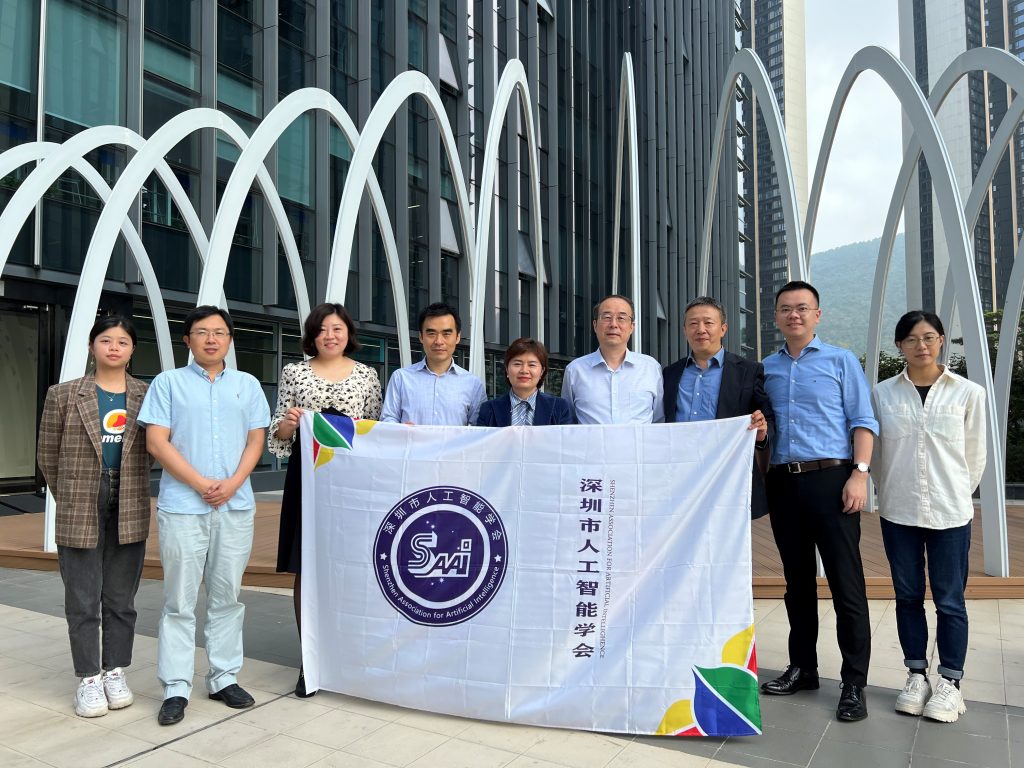

 关注微信公众号
关注微信公众号